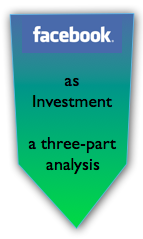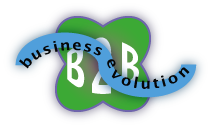 Facebook As Investment: No Replacement for Facebook But Pureplays Will Fade shows how the fading importance of social networks is the threat—not competitors. In Part One of the Facebook As Investment trilogy, I argued that Facebook had a signifiant trust gap with users that would inhibit its ability to monetize its most unique and valuable assets, and that the trust gap was recently compounded by its “IPO irregularities.” In Part Two, I’ll take a different tack and analyze the investment prospects of Facebook-the-platform. Part Three advises executives on how to isolate their social business investments from Facebook business risks. Facebook As Investment: No Replacement for Facebook But Pureplays Will Fade shows how the fading importance of social networks is the threat—not competitors. In Part One of the Facebook As Investment trilogy, I argued that Facebook had a signifiant trust gap with users that would inhibit its ability to monetize its most unique and valuable assets, and that the trust gap was recently compounded by its “IPO irregularities.” In Part Two, I’ll take a different tack and analyze the investment prospects of Facebook-the-platform. Part Three advises executives on how to isolate their social business investments from Facebook business risks.
In its favor, Facebook will not have to worry about being “displaced” by another social network the way that it displaced MySpace. In the near term, this lack of competition will give the company some breathing room. However, a more daunting threat awaits, the end of the social network pureplay, but that is 3-5 years out.
Nonetheless, the fate of pureplays should be top-of-mind for serious Facebook investors: to produce the fabulous returns that […]
 My predictions from the 1990s and beyond about the disruption of “careers” and “work” have been coming true at an increasing pace, so here I’ll offer a quick retrospective of key trends as well as numerous how-to resources for using these disruptions to your advantage. Disruptions change the rules. Although most people don’t like “the rules” at times, we all take comfort in them because we have a clue about how to manage and get what we want. No one likes to feel clueless, but that’s how disruption causes most people to feel, so they try to avoid it. However, by facing the world head on and understanding the profound economic and social changes that are happening, you can see where the proverbial puck will be and skate there before most other people. Let’s go! My predictions from the 1990s and beyond about the disruption of “careers” and “work” have been coming true at an increasing pace, so here I’ll offer a quick retrospective of key trends as well as numerous how-to resources for using these disruptions to your advantage. Disruptions change the rules. Although most people don’t like “the rules” at times, we all take comfort in them because we have a clue about how to manage and get what we want. No one likes to feel clueless, but that’s how disruption causes most people to feel, so they try to avoid it. However, by facing the world head on and understanding the profound economic and social changes that are happening, you can see where the proverbial puck will be and skate there before most other people. Let’s go!
[…]
 The B2B Executive’s How-to Guide to Social Business is an executive primer on developing B2B relationships much faster and cheaper. The B2B Executive’s How-to Guide to Social Business is an executive primer on developing B2B relationships much faster and cheaper.
If you have been on several “social media” platforms as a firm or individual for some time but feel that you’re barely scratching the surface, this guide will help you boost your results significantly because: its goal is to help you develop B2B relationships more efficiently, instead of “selling” yourself and it shows you how to use B2B-oriented platforms in concert to increase leverage. If you would like some background on the profound distinction between “selling” yourself and focusing on relationship, “Social Business Disruption of B2B Sales & Marketing” crystallizes it in 8 minutes.
[…]
 This Executive’s Guide to Blogging offers executives a pragmatic, conservative approach to blogging. For years, now, I have beseeched all the executives and “knowledge workers” I know (that’s thousands) to blog, so please consider this as part of that campaign—with benefits (because this is a how-to post). Here’s why: In the Knowledge Economy’s pervasive digital networks, you are invisible unless you come across people’s screens regularly. And, while you are invisible, your potential business partners are seeing people who do flit across their screens. If you aren’t there, you are in a bloody ocean that gets smaller every year. Don’t stay in, the water is not fine. Please understand that I’m stating this as a simple fact. I’m sure you’ve read books like The Long Tail, which describe how we are all publishers now, that is, those of us who decide to use the free tools at our disposal. This Executive’s Guide to Blogging offers executives a pragmatic, conservative approach to blogging. For years, now, I have beseeched all the executives and “knowledge workers” I know (that’s thousands) to blog, so please consider this as part of that campaign—with benefits (because this is a how-to post). Here’s why: In the Knowledge Economy’s pervasive digital networks, you are invisible unless you come across people’s screens regularly. And, while you are invisible, your potential business partners are seeing people who do flit across their screens. If you aren’t there, you are in a bloody ocean that gets smaller every year. Don’t stay in, the water is not fine. Please understand that I’m stating this as a simple fact. I’m sure you’ve read books like The Long Tail, which describe how we are all publishers now, that is, those of us who decide to use the free tools at our disposal.
Blogging is 21st century thought leadership, which is table stakes in the Knowledge Economy. Your thoughts represent and “scale” you, so they help you to connect with people with whom […]
Triple the Value of Your LinkedIn Network by Interacting shows how to attract and maintain the attention of Connections you care most about.
 Old habits die hard, and so it is with the ingrained assumption that “content sells.” Yes, having a current LinkedIn Profile replete with keyword combinations relevant to your High Interest Connections is very important, but it’s back seat to giving your Connections personal attention. Here I’ll address your protest that “I don’t have time!” by sharing some ultra-efficient processes for interacting on LinkedIn. Read on if you want to outperform 99% of other LinkedIn members. Old habits die hard, and so it is with the ingrained assumption that “content sells.” Yes, having a current LinkedIn Profile replete with keyword combinations relevant to your High Interest Connections is very important, but it’s back seat to giving your Connections personal attention. Here I’ll address your protest that “I don’t have time!” by sharing some ultra-efficient processes for interacting on LinkedIn. Read on if you want to outperform 99% of other LinkedIn members.
[…]
Using the Relationship Value Map to Optimize Your Social Networks is a step-by-step approach to prioritizing your firm’s interactions in social networks to significantly improve the return on your team’s time.

CSRA’s Relationship Value Map is a simple but invaluable tool you can use to organize your social networks to meet your personal or business goals better. Its Interest and Trust vectors intersect to create four quadrants for your connections. I designed it when working with individual executive clients in 2009, but CSRA uses it with enterprise clients as well, especially those with direct (B2B) sales forces who need to prioritize their relationship building activities.
[…]
WSJ Take on Google Plus Epitomizes Market Myopia and Opportunity reveals how conventional wisdom misunderstands Google+ and how to take advantage of the situation.

Most people have the whole “web 2.0 thing” sorted out by now. They have accounts in LinkedIn for business, Facebook for personal and Twitter for I-don’t-really-know-but-I’m-on-it. They also know that Google “doesn’t get social” as the search behemoth has littered carcasses of failed ventures around the web.
Alas, as I have argued here and in conference presentations since Google+ launched, this misunderstanding is completely understandable—and wrong. Most interesting here, it elevates opportunities and threats for market participants.
[…]
 Here’s a useful financial services social business example from Forbes. It details how a Midwest financial services firm grew at competitors’ expense by using LinkedIn, Twitter & legacy communications. Here’s a useful financial services social business example from Forbes. It details how a Midwest financial services firm grew at competitors’ expense by using LinkedIn, Twitter & legacy communications.
Notice that Jefferson, an investments firm, engaged its channel (financial advisors), using LinkedIn, YouTube, Twitter and legacy marcom. Their momentum enabled them to maintain their pricing while competitors felt compelled to lower theirs.
Another powerful lesson is, during “downturns,” don’t follow the herd and cut sales and marketing investments, especially when you can use social business to magnify impact as Jefferson did. Well done! #li
Many employment or career-related discussions contain a feeling of gloom and doom, but I have noticed a paradoxical market development: that the unpredictable and volatile economy that affects all businesses and careers is actually driving more demand for expertise, but the demand doesn’t look the same to companies or workers. Here I’ll explain how this works, but even more important, I’ll give you some practical tips on using the market to your advantage (featuring social technologies).
[…]
B2B Customers Getting Social Fast: How Marketing and Sales Can Evolve explains how clients/customers are smarter and want a new kind of relationship | The new economics of business reputation
 While preparing to launch Social Business Services for B2B Sales in January 2012, I have been engaged in its Ecosystem Audit. I have plumbed online conversations about B2B Sales and Marketing adoption of social business (erstwhile social media). I have been struck by a recurring realization: a large part of Marketing and Sales as we know them is significantly out of alignment with B2B customers. Social business is permeating customer networks throughout the economy and changing customer behavior and expectations. This has created a rare opportunity for B2B marketing and sales people who understand and respond ahead of the market. If I’m right, this could be one of the most important posts you read this year. While preparing to launch Social Business Services for B2B Sales in January 2012, I have been engaged in its Ecosystem Audit. I have plumbed online conversations about B2B Sales and Marketing adoption of social business (erstwhile social media). I have been struck by a recurring realization: a large part of Marketing and Sales as we know them is significantly out of alignment with B2B customers. Social business is permeating customer networks throughout the economy and changing customer behavior and expectations. This has created a rare opportunity for B2B marketing and sales people who understand and respond ahead of the market. If I’m right, this could be one of the most important posts you read this year.
Two quick examples of misalignment: one of Marketing’s underlying assumptions is that it is not economically feasible to have large-scale one-on-one customer conversations, so marketing must […]
|
|
 Facebook As Investment: No Replacement for Facebook But Pureplays Will Fade shows how the fading importance of social networks is the threat—not competitors. In Part One of the Facebook As Investment trilogy, I argued that Facebook had a signifiant trust gap with users that would inhibit its ability to monetize its most unique and valuable assets, and that the trust gap was recently compounded by its “IPO irregularities.” In Part Two, I’ll take a different tack and analyze the investment prospects of Facebook-the-platform. Part Three advises executives on how to isolate their social business investments from Facebook business risks.
Facebook As Investment: No Replacement for Facebook But Pureplays Will Fade shows how the fading importance of social networks is the threat—not competitors. In Part One of the Facebook As Investment trilogy, I argued that Facebook had a signifiant trust gap with users that would inhibit its ability to monetize its most unique and valuable assets, and that the trust gap was recently compounded by its “IPO irregularities.” In Part Two, I’ll take a different tack and analyze the investment prospects of Facebook-the-platform. Part Three advises executives on how to isolate their social business investments from Facebook business risks.
 My predictions from the 1990s and beyond about the disruption of “careers” and “work” have been coming true at an increasing pace, so here I’ll offer a quick retrospective of key trends as well as numerous how-to resources for using these disruptions to your advantage. Disruptions change the rules. Although most people don’t like “the rules” at times, we all take comfort in them because we have a clue about how to manage and get what we want. No one likes to feel clueless, but that’s how disruption causes most people to feel, so they try to avoid it. However, by facing the world head on and understanding the profound economic and social changes that are happening, you can see where the proverbial puck will be and skate there before most other people. Let’s go!
My predictions from the 1990s and beyond about the disruption of “careers” and “work” have been coming true at an increasing pace, so here I’ll offer a quick retrospective of key trends as well as numerous how-to resources for using these disruptions to your advantage. Disruptions change the rules. Although most people don’t like “the rules” at times, we all take comfort in them because we have a clue about how to manage and get what we want. No one likes to feel clueless, but that’s how disruption causes most people to feel, so they try to avoid it. However, by facing the world head on and understanding the profound economic and social changes that are happening, you can see where the proverbial puck will be and skate there before most other people. Let’s go! This Executive’s Guide to Blogging offers executives a pragmatic, conservative approach to blogging. For years, now, I have beseeched all the executives and “knowledge workers” I know (that’s thousands) to blog, so please consider this as part of that campaign—with benefits (because this is a how-to post). Here’s why: In the Knowledge Economy’s pervasive digital networks, you are invisible unless you come across people’s screens regularly. And, while you are invisible, your potential business partners are seeing people who do flit across their screens. If you aren’t there, you are in a bloody ocean that gets smaller every year. Don’t stay in, the water is not fine. Please understand that I’m stating this as a simple fact. I’m sure you’ve read books like The Long Tail, which describe how we are all publishers now, that is, those of us who decide to use the free tools at our disposal.
This Executive’s Guide to Blogging offers executives a pragmatic, conservative approach to blogging. For years, now, I have beseeched all the executives and “knowledge workers” I know (that’s thousands) to blog, so please consider this as part of that campaign—with benefits (because this is a how-to post). Here’s why: In the Knowledge Economy’s pervasive digital networks, you are invisible unless you come across people’s screens regularly. And, while you are invisible, your potential business partners are seeing people who do flit across their screens. If you aren’t there, you are in a bloody ocean that gets smaller every year. Don’t stay in, the water is not fine. Please understand that I’m stating this as a simple fact. I’m sure you’ve read books like The Long Tail, which describe how we are all publishers now, that is, those of us who decide to use the free tools at our disposal.

 Here’s a useful financial services social business example from Forbes. It details how a Midwest financial services firm grew at competitors’ expense by using LinkedIn, Twitter & legacy communications.
Here’s a useful financial services social business example from Forbes. It details how a Midwest financial services firm grew at competitors’ expense by using LinkedIn, Twitter & legacy communications. While preparing to launch Social Business Services for B2B Sales in January 2012, I have been engaged in its Ecosystem Audit. I have plumbed online conversations about B2B Sales and Marketing adoption of social business (erstwhile social media). I have been struck by a recurring realization: a large part of Marketing and Sales as we know them is significantly out of alignment with B2B customers. Social business is permeating customer networks throughout the economy and changing customer behavior and expectations. This has created a rare opportunity for B2B marketing and sales people who understand and respond ahead of the market. If I’m right, this could be one of the most important posts you read this year.
While preparing to launch Social Business Services for B2B Sales in January 2012, I have been engaged in its Ecosystem Audit. I have plumbed online conversations about B2B Sales and Marketing adoption of social business (erstwhile social media). I have been struck by a recurring realization: a large part of Marketing and Sales as we know them is significantly out of alignment with B2B customers. Social business is permeating customer networks throughout the economy and changing customer behavior and expectations. This has created a rare opportunity for B2B marketing and sales people who understand and respond ahead of the market. If I’m right, this could be one of the most important posts you read this year.